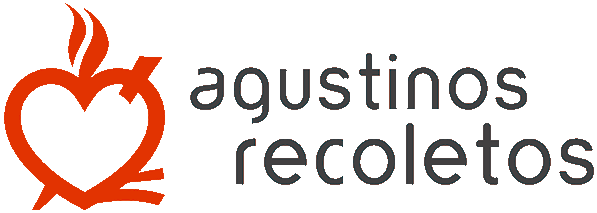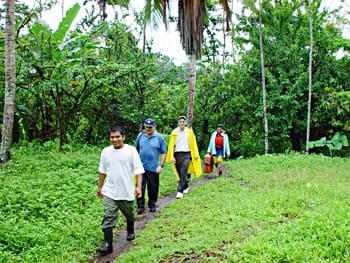Not during the era of the Conquest or within the period of Colonization were the Spaniards able to settle down in a more permanent way in the region that is presently called Bocas del Toro. Something similar happened at the time of the missions. At the end of almost three centuries of untold sacrifices they were reduced to nothing, and before the period of colonization would end the evangelical labor in these regions was practically abandoned. Evangelization has not even begun in the bigger part of the actual Bocas del Toro.
“This is another world,” writes a missionary who, just recently arrived at the place, begun to journal his experiences: “One who comes to Bocas del Toro will have the sensation of finding himself in another world, distinct from what he has known in the capital or in the interior of Panama”.
The prelature of Bocas del Toro, situated within the tropical zone in the Caribbean Sea, is at the northeast of the Republic of Panama, near the coast of the Atlantic Ocean. It is bounded by the Caribbean Sea in the north, the province of Veraguas in the east, and in the south by Chiriqui, and by the Republic of Costa Rica in the west.
Its land area is 8,745 sq. kilometers and has two very distinct parts: the insular and the continental.
The islands are grouped in the Archipelago of Bocas del Toro and have a total land area of two hundred twenty square kilometers, roughly 2.5% of the total land mass. This archipelago consists of nine big islands, 51 islets with names and a multitude of nameless ones.
The continental part or the firm land is the most important and this constitutes the biggest portion of the province (8,525 km2). Except for some coastal plains, this territory is mostly rugged and full of ravines; being covered by big tropical forests, and with heavy rainfall, the territory is uninhabited in many parts and is unkind to human life.
Areas that are populated and located at least 500 meters above the sea level have tropical and very humid climate, with temperatures that never go below 22 degrees centigrade. Rainfall averages 3,500 cubic millimeters a year. We frequently suffer strong rains that cause floods and isolation, furthering the already miserable situation of the poor.


The population of Bocas del Toro is around one hundred thousand.The people
The population of Bocas del Toro is around one hundred thousand. It has a density of 10.6 inhabitants every square kilometer. It is very much below the national index of Panama, which is, 30.7 inhabitants per square kilometer.
In administration, the province is divided into three districts or municipalities: Bocas del Toro, Chiriquí Grande, and Changuinola. The capital, which is Bocas del Toro City, has only 2,500 inhabitants. The rest of the population live dispersed or partly scattered, usually along pathways or along the coasts of deep passes and rivers.
Its peoples are varied. No less than five groups inhabit the province. Some are autochthonous like the ngobes, the buglés and teribes. Others are immigrants, like the kunas, the afroantillanos, the latinopanameños, centroamericans and various minorities of different origins.
Each group maintains its individual history, customs, traditions, values, cultural heritage, and language. This is true especially among the indigenous tribes and the afroantillanos. Great part of the population speaks, or at least understands, Spanish, which is the official language.
Half of the population is hardly catholic, lacking much in religious formation and with very little religious practice, even in urban centers. There are various traditional protestant churches, like the Methodists, Baptists, Episcopalians, Adventists, and all have been here before the Catholics. But there is also the presence of the one thousand and more disintegrating and most recent evangelical sects.
This is confirmed by a popular saying that in Bocas del Toro “there are more churches than canteens”. And it’s true… and to think that the “cantinas” are not few.


The prelature of Bocas del Toro was created in October of 1962.The mission
The prelature of Bocas del Toro was created in October of 1962 and officially erected on the 29th of February 1964. Mons. Martin Legarra assumed office as its first prelate on the same day and the Augustinian Recollects, through the province of Our Lady of Consolation, took charge of its pastoral attention. The prelature is divided into five parishes.
Many are the difficulties in the mission work; some are cultural in character, others are material. Among the first are the differences in values and counter-values, cultural diversities among racially different groups.
Among the difficulties of material character, we mention the distances, the absence of access and other common means of communication; the dispersion of areas that are populated, the climate and heavy rainfall as well as the ravines and deep passes.
The missionaries share the poverty which most of the people live. The local church lacks human, technical and economic resources. The infrastructures are also poor, destroyed in most part by earthquakes and frequent floods.


The indigenous peoples constitute the majority of the population of the prelature.Inculturated evangelization
The indigenous peoples constitute the majority of the population of the prelature. Principally the indigenous ngobe (guaymíes): but also the native naso or teribes, bugles or bokotás; without forgetting the kumas de la Bananera.
The Order, convinced that “the Church, in order to complete the mission that Christ has entrusted to her, must project herself into concrete situations and toward concrete people”, has opted to be a church that is at the service of the indigenous tribes who, incarnated in each culture, walk towards authentic indigenization.
In this manner, the responsibility of the baptized natives is developed; their missionary preoccupations are welcomed, catechists are formed and vocation to the religious and priestly life is promoted.
Some of the activities of the mission consist of: Integrate the language, traditions, history, and the symbols of the indigenous peoples into the liturgical celebrations; as well as recreate the basic elements of the Gospel message and the Christian doctrine in the indigenous languages. Support the conscientization and development projects of the indigenous peoples; Assist their own authorities and proper congresses; accompany them in the clamor for historical rights.
Option for the poor
The bocatoreñan Church lives her mission among peoples in extreme poverty: bananero workers, primitive rural dwellers, humble public officials, indigenous tribes, afroantillanos… poor people who, in many cases and even situations, are also old and sickly.
In like manner, the conditions and the resources of the missionaries are not much different from those of the majority of peoples, and in a church that is materially poor.
Convinced that our God is the God of life who desires abundant life for all his children, this option for the poor impels the missionaries to work with much enthusiasm in order to redeem the miserable condition that is not desired by God for his children in this world. In many ways and availing of present opportunities to ask for assistance destined for development in the mission, different projects to improve the quality of life of the inhabitants are being realized.
Option for the family
In a place that is socially complex like Bocas del Toro: immigration-emigration, cultural diversity, deficient education and formation, poverty, insecurity in work, up-rootedness, feast-oriented environment, alcoholism, chauvinism, drugs, loss of cultural identity, – the situation of the family is made more preoccupying. Families are incomplete, either because of disintegration or because there was no union at all from the very beginning. Temporary marital relationship, having two families, abandonment of mothers and children, you find all these in a dramatic situation.
Conscious that the family is “image of God,” a domestic church and the basic unity of society, we opt for a pastoral care of the family that promotes, animates and defends the values of the family according the plans of God. We support and promote the Centers of Family and Social Formation.
In these corners of the world, in the hidden turns of this small istmeñan country, which some would like to call the bridge of the world, twelve Augustinian Recollect missionaries keep the missionary spirit of their congregation alive by sharing the life and aspirations of the indigenous, the afros and latinos who inhabit these places, discovered years ago by the colonizers but which still remain hidden and unknown to many.
This is indeed another world, one that the Augustinian Recollect missionaries appropriated because they have made their own the life of its peoples.



